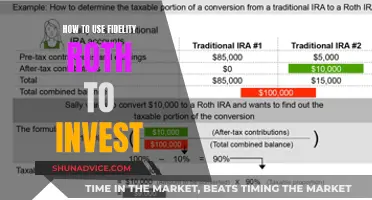
Cash reserves are funds set aside by companies or individuals for emergency situations or unexpected financial needs. They are a strategic part of financial planning, helping to maintain liquidity and ensuring quick access to cash without selling assets. Cash reserves can help cover short-term costs, finance investments and protect against financial instability. While the amount set aside varies, it is generally recommended that reserves cover three to six months of living or operating expenses.
| Characteristics | Values |
|---|---|
| Purpose | Emergency funding for unexpected expenses |
| Timeframe | Short-term |
| Accessibility | Quick and immediate access |
| Liquidity | Highly liquid |
| Amount | 3-6 months of expenses or operating expenses |
| Storage | Separate bank account, savings account, money market account, or short-term investments |
| Advantages | Avoids debt, maintains financial stability, enables quick response to opportunities |
| Disadvantages | Missed investment opportunities, low returns, potential mismanagement |
What You'll Learn

Avoiding debt and credit card fees
A cash reserve is an emergency fund that can be used to cover sudden short-term requirements, such as unexpected payments or large purchases. It is recommended that individuals have enough cash in reserve to last at least three to six months in case of an emergency. This can help to avoid debt and credit card fees by removing the need to borrow money or use credit cards when unexpected costs arise.
- Annual fees: These are fees you pay annually for the privilege of carrying a credit card. If you don't want to pay an annual fee, opt for a no-annual-fee card. Alternatively, calculate whether the rewards you earn from the card outweigh the annual fee.
- Balance transfer fees: Charged when you move debt from one credit card to another, typically 3-5% of the amount transferred. To avoid this fee, use a card with no balance transfer fees or weigh up whether the interest savings during an interest-free period make up for the transfer fee.
- Cash advance fees: Charged when you borrow cash against your credit card, typically 2-5% of the amount borrowed. Avoid this fee by borrowing money from family or friends or taking out a personal loan, which usually offers better terms.
- Finance charges: Interest that accrues on the balance you carry on your credit card. The best way to avoid this is to pay your balance in full each month. If you can't do this, consider using a low-interest credit card instead of a rewards card to minimise interest charges.
- Foreign transaction fees: A charge of 1-3% added to purchases made outside of the US. Many travel credit cards do not charge this fee, nor do Discover and Capital One on any of their cards.
- Late payment fees: Charged when you don't make the minimum payment by the due date, ranging from $8 for first-time instances to $40 for subsequent violations within six billing cycles. You can avoid this fee by enrolling in autopay or opening a credit card with no late fees, such as the Citi Simplicity® Card.
- Over-limit fees: Charged when your card's balance exceeds your credit limit. According to the Credit Card Act of 2009, you have to opt into this fee, and your transaction will otherwise be rejected. Avoid this fee by staying well under your credit limit and setting alerts when you're approaching it.
- Returned payment fees: Charged when your check to the credit card company bounces or an automatic payment is blocked due to insufficient funds, typically around $35. Ensure you have sufficient funds in your account before scheduling payments.
Outside Investment: Blessing or Cash Flow Curse?
You may want to see also

Liquidity and quick access to funds
Cash is the most liquid form of wealth, and it is readily available for use in emergencies or short-term investments. However, it is important to strike a balance as keeping too much cash in reserve can lead to missed investment opportunities and lower returns. As such, it is generally recommended that both individuals and businesses maintain cash reserves that can cover three to six months' worth of essential expenses.
To ensure liquidity, individuals and businesses can also invest in short-term, highly liquid assets that can be quickly converted into cash without losing value. Examples include treasury bills, money market funds, and stocks and bonds that are not tied up in long-term investments.
By maintaining a balance between liquid funds and other investments, individuals and businesses can safeguard against financial instability while also maximising the interest earned on their funds.
Corporate Cash Investment Strategies: Maximizing Returns, Minimizing Risk
You may want to see also

Covering emergency expenses
Determine the Purpose of Your Cash Reserve
Recognise that a cash reserve is specifically designated for unforeseen situations. For individuals, this could include unexpected job loss, medical emergencies, or significant home or auto repairs. For businesses, it could be sudden dips in revenue, customer insolvencies, or unpaid invoices. Understanding the potential emergencies you want to safeguard against will help you tailor your cash reserve accordingly.
Calculate the Amount Needed
The general rule of thumb is to have enough cash reserves to cover living or operating expenses for three to six months. However, this duration can vary based on your specific circumstances. For instance, retirees may want to consider having reserves for up to 12 to 24 months of essential expenses. High-income earners or those with specialised jobs may also want a larger buffer as finding comparable employment could take longer in the event of job loss.
Choose Where to Keep Your Cash Reserve
Consider keeping your cash reserve in a separate bank account from your everyday expenditures. This helps ensure that the funds remain dedicated to their intended purpose and are not accidentally spent. For individuals, options like savings accounts, money market accounts, or certificates of deposit provide easy access to your money without incurring penalties for withdrawal.
Build and Maintain Your Cash Reserve
Commit to regularly setting aside funds to build your cash reserve. This could be a fixed amount or a percentage of your income or profits. Treat your cash reserve as a non-negotiable expense, just like any other essential payment. If you utilise some of your cash reserve, prioritise replenishing it as soon as possible to ensure you're prepared for future emergencies.
When to Use Your Cash Reserve
Use your cash reserve for surprise expenses, such as emergency repairs or natural disasters. It can also be tapped during slow sales months to cover expenses until business picks up again. Additionally, your cash reserve can be leveraged for growth opportunities, new acquisitions, or investments.
In summary, a well-maintained cash reserve empowers you to confidently face financial challenges and seize opportunities. By setting aside dedicated funds, you protect yourself from accumulating credit card debt or taking on additional loans to address emergency expenses.
Morris Invest: The Cash-Only Strategy Explained
You may want to see also

Taking advantage of growth opportunities
Cash reserves are an important strategic part of financial planning for businesses and individuals. They are funds set aside for emergency situations and unexpected costs, such as customer insolvencies, unpaid invoices, and revenue dips.
Having a cash reserve allows you to take advantage of growth opportunities by ensuring you have the liquidity to act quickly when opportunities arise. This is particularly important for startups and small businesses that may need to be flexible and responsive to navigate uncertain markets.
For example, if a business lands a deal with a new customer, it may need to use its cash reserve to help cover the costs of meeting increased demand. This could include purchasing extra materials or investing in new equipment. With a cash reserve, a business can take advantage of this growth opportunity without taking on debt or giving up equity.
Similarly, cash reserves can be used to pursue new growth opportunities, such as expanding into new markets, developing new products, or acquiring another business. They can also be used to cover the costs of new acquisitions, such as improved equipment or tools that can enhance a business's processes.
It is important to note that while cash reserves are essential, hoarding too much cash can be detrimental. Businesses and individuals must strike a balance to ensure they are not missing out on opportunities to reinvest funds in ways that could generate higher returns.
Cash App's Investing Tile: What's the Deal?
You may want to see also

Maintaining financial stability
Emergency Funding
One of the primary purposes of a cash reserve is to provide emergency funding when unexpected expenses arise. This could include unforeseen circumstances such as equipment breakdowns, customer insolvencies, unpaid invoices, or a sudden lull in sales. By having a cash reserve, individuals and businesses can cover these unexpected costs without needing to take on additional debt, such as credit card debt or loans. This helps to maintain financial stability and prevents the need to liquidate investments or use credit cards, which could disrupt progress toward financial goals.
Liquidity
Cash reserves ensure liquidity, providing quick access to cash without the need to sell assets. This liquidity is essential as it allows individuals and businesses to respond promptly to urgent needs or unexpected opportunities. For example, a business may use its cash reserves to finance investment opportunities or take advantage of quick growth opportunities, such as expanding to new markets or acquiring another business, without having to take on debt.
Financial Planning
Establishing a cash reserve is a vital step in achieving financial wellbeing and security. It requires careful financial planning, including calculating monthly operating expenses, considering potential emergency scenarios, and determining an appropriate reserve amount. This process helps individuals and businesses gain a deeper understanding of their financial situation and make more informed decisions about their money.
Peace of Mind
Building a cash reserve can provide individuals and businesses with financial peace of mind. Knowing that there is a buffer against unexpected costs or financial downturns can reduce stress and worry about the future. This sense of financial security can be invaluable, allowing individuals and businesses to focus on their goals and make more confident decisions.
Avoiding Missed Opportunities
While it is important not to hoard too much cash, which could lead to missed investment opportunities, a carefully considered cash reserve can help avoid this pitfall. By setting aside a dedicated amount for emergencies, individuals and businesses can ensure they have sufficient funds to cover short-term needs while still having enough capital available to seize growth opportunities when they arise.
In conclusion, maintaining a cash reserve is a crucial aspect of financial stability for both individuals and businesses. It provides a safety net in times of emergency, ensures liquidity, facilitates financial planning, and offers peace of mind, ultimately helping to safeguard against financial uncertainties.
Understanding the Ideal Cash-to-Investment Ratio for Your Business
You may want to see also
Frequently asked questions
A cash reserve is an emergency fund that can be used to cover unexpected costs, such as emergency repairs or a drop in revenue. It can also help you avoid taking on credit card debt or loans.
It is recommended that a cash reserve should cover between three to six months' worth of expenses. This can include living expenses for individuals or operating expenses for businesses.
Cash reserves can be kept in a separate bank account, such as a savings account, or in short-term, highly liquid investments, such as money market funds or treasury bills.
You can build a cash reserve by setting a monthly savings goal and putting money aside regularly. It is important to treat your cash reserve as a fixed expense and prioritise saving for it.
A cash reserve should be used for emergencies and unexpected expenses. This could include surprise costs, such as property damage or equipment repairs, slow sales months, or growth opportunities.







